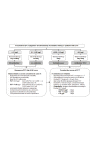Clinical review: the role of biomarkers in the diagnosis and management of community-acquired pneumonia
- PMID: 20236471
- PMCID: PMC2875480
- DOI: 10.1186/cc8155
Clinical review: the role of biomarkers in the diagnosis and management of community-acquired pneumonia
Abstract
In patients with community-acquired pneumonia, traditional criteria of infection based on clinical signs and symptoms, clinical scoring systems, and general inflammatory indicators (for example, leukocytosis, fever, C-reactive protein and blood cultures) are often of limited clinical value and remain an unreliable guide to etiology, optimal therapy and prognosis. Procalcitonin is superior to other commonly used markers in its specificity for bacterial infection (allowing alternative diagnoses to be excluded), as an indicator of disease severity and risk of death, and mainly as a guide to the necessity for antibiotic therapy. It can therefore be viewed as a diagnostic, prognostic, and perhaps even theragnostic test. It more closely matches the criteria for usefulness than other candidate biomarkers such as C-reactive protein, which is rather a nonspecific marker of acute phase inflammation, and proinflammatory cytokines such as plasma IL-6 levels that are highly variable, cumbersome to measure, and lack specificity for systemic infection. Elevated levels of pro-adrenomedullin, copeptin (which is produced in equimolar amounts to vasopressin), natriuretic peptides and cortisol are significantly related to mortality in community-acquired pneumonia, as are other prohormones such as pro-atrial natriuretic peptide, coagulation markers, and other combinations of inflammatory cytokine profiles. However, all biomarkers have weaknesses as well as strengths. None should be used on its own; and none is anything more than an aid in the exercise of clinical judgment based upon a synthesis of available clinical, physiologic and laboratory features in each patient.
Figures


Similar articles
-
Inflammatory biomarkers for the diagnosis, monitoring and follow-up of community-acquired pneumonia: clinical evidence and perspectives.Eur J Intern Med. 2011 Oct;22(5):460-5. doi: 10.1016/j.ejim.2011.02.023. Epub 2011 Mar 25. Eur J Intern Med. 2011. PMID: 21925053 Review.
-
Biomarkers: what is their benefit in the identification of infection, severity assessment, and management of community-acquired pneumonia?Infect Dis Clin North Am. 2013 Mar;27(1):19-31. doi: 10.1016/j.idc.2012.11.003. Epub 2012 Dec 6. Infect Dis Clin North Am. 2013. PMID: 23398863 Review.
-
Biomarkers in respiratory tract infections: diagnostic guides to antibiotic prescription, prognostic markers and mediators.Eur Respir J. 2007 Sep;30(3):556-73. doi: 10.1183/09031936.00166106. Eur Respir J. 2007. PMID: 17766633 Review.
-
Biomarkers and community-acquired pneumonia: tailoring management with biological data.Semin Respir Crit Care Med. 2012 Jun;33(3):266-71. doi: 10.1055/s-0032-1315638. Epub 2012 Jun 20. Semin Respir Crit Care Med. 2012. PMID: 22718212 Review.
-
[Diagnostic and prognostic power of biomarkers to improve the management of community acquired pneumonia in the emergency department].Enferm Infecc Microbiol Clin. 2014 Apr;32(4):225-35. doi: 10.1016/j.eimc.2013.04.015. Epub 2013 Oct 31. Enferm Infecc Microbiol Clin. 2014. PMID: 24182623 Spanish.
Cited by
-
Utility of two biomarkers for directing care among patients with non-severe community-acquired pneumonia.Eur J Clin Microbiol Infect Dis. 2012 Dec;31(12):3397-405. doi: 10.1007/s10096-012-1708-5. Epub 2012 Aug 5. Eur J Clin Microbiol Infect Dis. 2012. PMID: 23010902
-
Pros and cons of using biomarkers versus clinical decisions in start and stop decisions for antibiotics in the critical care setting.Intensive Care Med. 2015 Oct;41(10):1739-51. doi: 10.1007/s00134-015-3978-8. Epub 2015 Jul 21. Intensive Care Med. 2015. PMID: 26194026 Review.
-
DAMPs and RAGE Pathophysiology at the Acute Phase of Brain Injury: An Overview.Int J Mol Sci. 2021 Feb 28;22(5):2439. doi: 10.3390/ijms22052439. Int J Mol Sci. 2021. PMID: 33670976 Free PMC article. Review.
-
Lipid profiles and differential lipids in serum related to severity of community-acquired pneumonia: A pilot study.PLoS One. 2021 Mar 11;16(3):e0245770. doi: 10.1371/journal.pone.0245770. eCollection 2021. PLoS One. 2021. PMID: 33705428 Free PMC article.
-
Matrix metalloproteinase-8: a useful biomarker to refine the diagnosis of community-acquired pneumonia upon intensive care unit admission?Crit Care. 2019 Jun 20;23(1):226. doi: 10.1186/s13054-019-2513-7. Crit Care. 2019. PMID: 31221213 Free PMC article. No abstract available.
References
-
- Becker KL, Nylen ES, White JC, Muller B, Snider RH Jr. Clinical review 167: procalcitonin and the calcitonin gene family of peptides in inflammation, infection, and sepsis: a journey from calcitonin back to its precursors. J Clin Endocrinol Metab. 2004;89:1512–1525. doi: 10.1210/jc.2002-021444. - DOI - PubMed
-
- Joyce CD, Fiscus RR, Wang X, Dries DJ, Morris RC, Prinz RA. Calcitonin generelated peptide levels are elevated in patients with sepsis. Surgery. 1990;108:1097–1101. - PubMed
Publication types
MeSH terms
Substances
LinkOut - more resources
Full Text Sources
Other Literature Sources
Research Materials

